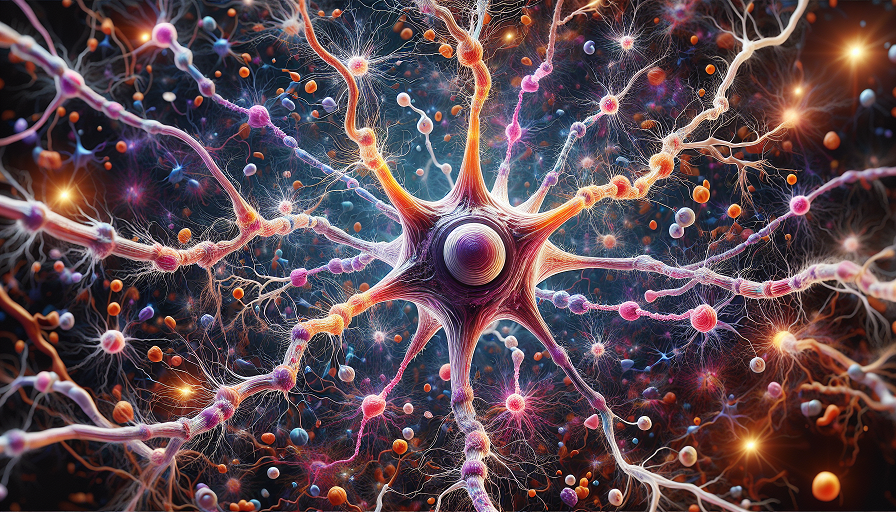
Short answer: Cold exposure probably raises circulating BDNF transiently for some people, mainly via arousal and mild shivering responses. The effect size in humans looks modest and variable, and it is not a substitute for proven BDNF boosters like aerobic exercise and good sleep. Used cautiously, brief cold can be one tool in a broader brain-health routine.
Contents
BDNF, in One Minute
Brain-derived neurotrophic factor (BDNF) supports synaptic plasticity, neurogenesis in the hippocampus, and learning. Higher BDNF associates with better mood and cognition; lower levels are linked to stress and metabolic problems. Important nuance: most “BDNF increases” reported in human studies are measured in blood (serum or plasma), which partly reflects release from platelets and peripheral tissues – not necessarily a large rise inside the brain. Still, peripheral changes can track with central signaling over time.
How Cold Could Raise BDNF: Plausible Pathways
- Sympathetic arousal: Cold shock activates the locus coeruleus and catecholamines (norepinephrine, dopamine). Adrenergic signaling can upregulate BDNF expression in some tissues and primes attention networks.
- Shivering “exercise”: Involuntary muscle activity increases lactate and myokines; both can stimulate BDNF release similarly to light exercise.
- Brown fat activation: Cold engages brown adipose tissue and mitochondrial pathways (AMPK/PGC-1α) that overlap metabolically with exercise-induced plasticity signals.
- Cold-shock proteins: Very mild cooling can induce proteins like RBM3 in animal models, which protect synapses. Whether typical human cold showers meaningfully activate these pathways is unclear.
What the Evidence Suggests (Read This Before You Buy a Tub)
- Acute bumps happen, but vary: Small trials and field studies report modest rises in circulating BDNF after cold water immersion or winter swimming, especially when exposure is novel. Effects are inconsistent across protocols and fade with habituation.
- Exercise beats cold: Aerobic activity reliably elevates BDNF and improves cognition; combining light exercise with brief cold may be additive for mood/alertness, but exercise remains the primary driver.
- Mood and stress effects are clearer: Many participants report improved mood and stress resilience after regular cold exposure. Those changes may indirectly benefit cognition (better motivation, less rumination).
- Confounds abound: Outdoor swims include social interaction, sunlight, and effortful breathing – all affect arousal and mood. Lab immersions often allow shivering, which makes the stimulus partly an exercise test.
- Long-term cognition: unknown: We lack large, controlled trials linking routine cold exposure to durable cognitive gains in healthy adults. Treat claims of big memory boosts skeptically.
A Pragmatic, Safety-First Protocol
- Start mild and brief: Finish showers cool for 30–60 seconds, 2–4 days per week. Increase by 15–30 seconds per session if well tolerated. No heroics.
- Target “uncomfortable but controllable” cold: For water immersion, many people use 50–59°F (10–15°C) for 1–3 minutes. Reduce time if you’re shivering hard or breathing is erratic.
- Control the breath: Expect an initial gasp. Keep the head above water; use steady nasal or pursed-lip breathing to blunt the cold-shock reflex. Never hyperventilate and submerge – risk of shallow-water blackout rises.
- Rewarm smartly: After, dry off and dress; rewarm with movement and a warm room, not a scalding shower (which can worsen “afterdrop”).
- Cycle, don’t grind: 2–4 brief exposures per week are plenty. More is not necessarily better and may blunt benefits via adaptation or disrupt sleep.
Timing With Workouts and Sleep
- After strength sessions: Ice baths immediately post-lift can dampen muscle-building pathways. If you care about hypertrophy, separate cold by 4–6 hours or save it for rest days.
- After cardio: Light or moderate cardio followed by a short cool immersion is reasonable; you’ll likely feel alert and calm. The exercise provides the most reliable BDNF stimulus.
- Evening caution: Late-night cold spikes arousal and may impair sleep for some; morning or midday is usually better for cognitive energy.
Who Should Avoid or Get Medical Advice First
- Cardiovascular disease, uncontrolled hypertension, arrhythmias, or history of cold-induced chest pain.
- Raynaud’s phenomenon, cold urticaria, neuropathy with reduced sensation, or pregnancy.
- Anyone with fainting history or on medications affecting thermoregulation. Never do cold exposure alone or under the influence.
How to Tell If It Helps You
- Track morning mood and task initiation for 1–2 weeks with and without cold exposure.
- Note sleep quality; if cold late in the day worsens sleep, you’re trading away brain benefits.
- If you already exercise consistently and sleep well, expect only small incremental gains from cold.
Bottom Line
Cold exposure can create a short-term neurochemical environment favorable to attention and may nudge circulating BDNF. The effect is modest and highly individual. Use cold as a brief, safe arousal tool layered on top of the basics – exercise, daylight, skill practice, and sleep – which remain the heavy hitters for neuroplasticity.

